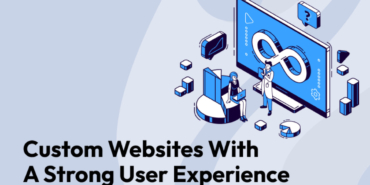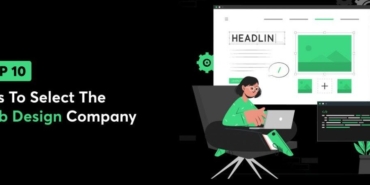Web design trends evolve continually, reflecting technological advancements and changing user preferences. Here are some of the web design trends expected to e
Home » Digital Marketing Agencies
Top Digital Marketing Agencies
Are you in the market for a top-notch web design company? Look no further! Choosing the right web design partner is crucial for the success of your online presence. A skilled team can transform your vision into a stunning, user-friendly website that drives results. From intuitive navigation to eye-catching visuals, the right web design company will elevate your brand and captivate your audience. Don't settle for anything less than excellence - invest in a web design partner that will take your online presence to new heights! Ready to get started? Reach out today and let's discuss how we can bring your digital dreams to life.
List of the Best Digital Marketing Agencies
Digital Silk is a creative digital agency firm. It also provides software and app development, digital transformation, even branding, and creative services. It offers services like web design and development, digital marketing including social media, email marketing and more.
- 18 West 18th Street, New York 10011, United States
- 100 - 249
- 2019
- $150/hrs
- Inquire
Latest Trends Related to Web Design Companies
How To Build Professional Custom Websites With A Strong User Experience According To Agency Experts
Building professional custom websites with a strong user experience requires a strategic approach that combines design, development, and user research. Here ar
6 Experts Reveal How To Design Websites and Apps That Convert
Designing websites and apps that convert involves a combination of user-centered design, strategic thinking, and technical expertise. Here are insights from si
How to find a right web design companies?
Finding the right web design company is crucial to ensure the success of your online presence. Here are some steps and tips to help you choose the best web des
Web Design Companies Hiring Guide
What is Web Design?
Web design is the process of creating and designing websites. It encompasses a variety of skills and disciplines in the production and maintenance of websites. Here are some key aspects of web design:
Layout and Structure: This involves organizing the information on a website in a clear, logical, and visually appealing way. It includes deciding on the placement of text, images, and other elements.
Visual Design: This aspect focuses on the aesthetics of the website, including the use of colors, fonts, and images to create an attractive and cohesive look. It involves graphic design principles to make the website visually appealing.
User Interface (UI) Design: UI design is about designing the layout and interactive elements of a website to ensure that users can navigate and interact with it easily and effectively.
User Experience (UX) Design: UX design focuses on the overall experience of users when they interact with the website. This includes ensuring that the site is easy to use, intuitive, and provides a positive experience for users.
Responsive Design: With the variety of devices and screen sizes available, responsive design ensures that a website looks and functions well on all types of devices, from desktops to smartphones and tablets.
Content Creation: This involves creating and managing the text, images, videos, and other multimedia content that will be displayed on the website.
SEO (Search Engine Optimization): SEO is the practice of optimizing a website to rank higher in search engine results. This involves using relevant keywords, creating high-quality content, and ensuring the site is technically optimized for search engines.
Web Technologies: Web designers use various technologies and languages, such as HTML, CSS, JavaScript, and design tools like Adobe Photoshop and Sketch, to create and implement designs.
Accessibility: Ensuring that websites are accessible to all users, including those with disabilities, by following best practices and guidelines, such as the Web Content Accessibility Guidelines (WCAG).
Maintenance and Updates: After a website is launched, it requires regular maintenance and updates to ensure it remains secure, functional, and up-to-date with the latest web standards and technologies.
What Does web Design Companies Do?
Web design companies offer a wide range of services to help businesses and individuals establish and maintain a strong online presence. Their activities generally include:
Consultation and Planning: Working with clients to understand their goals, target audience, and specific needs. This includes defining the project scope, creating a strategy, and setting timelines.
Website Design: Creating the visual layout and design of the website, which includes the color scheme, typography, graphics, and overall aesthetics. This also involves ensuring the design aligns with the client's brand identity.
UI/UX Design: Focusing on creating a user-friendly interface and providing a positive user experience. This includes designing navigation, interactive elements, and ensuring the site is intuitive and easy to use.
Responsive Design: Ensuring the website is mobile-friendly and looks good on various devices, including desktops, tablets, and smartphones.
Web Development: Coding and programming the website using various technologies like HTML, CSS, JavaScript, and possibly backend technologies like PHP, Python, or Ruby. This can also include using content management systems (CMS) like WordPress, Joomla, or Drupal.
Content Creation: Providing services to create high-quality content, such as text, images, videos, and other multimedia, that aligns with the client's messaging and goals.
SEO (Search Engine Optimization): Optimizing the website to improve its ranking on search engines. This includes keyword research, on-page SEO, technical SEO, and creating SEO-friendly content.
E-commerce Solutions: Designing and developing online stores, integrating payment gateways, and ensuring secure transactions.
Website Maintenance and Updates: Offering ongoing support to keep the website up-to-date with the latest security patches, technology updates, and content changes.
Web Hosting and Domain Management: Providing or recommending web hosting services and managing domain registration and renewals.
Analytics and Reporting: Implementing tools like Google Analytics to track website performance, visitor behavior, and providing clients with regular reports on key metrics.
Custom Solutions: Developing custom web applications or features tailored to the specific needs of the client, which may not be available through standard platforms or templates.
Training and Support: Providing training for clients on how to manage and update their website, as well as offering ongoing technical support.
Digital Marketing Services: Some web design companies also offer digital marketing services, including social media marketing, email marketing, pay-per-click (PPC) advertising, and more to help drive traffic to the website and achieve business goals.
What's the difference between a web design and web development?
Web design and web development are two distinct but closely related aspects of creating a website. Here are the primary differences between the two:
Web Design
Focus on Visuals and User Experience:
- Aesthetics: Web design is concerned with the visual look and feel of a website. This includes layout, color schemes, typography, and imagery.
- User Interface (UI): Designing how the website looks and ensuring it provides a visually appealing experience.
- User Experience (UX): Focusing on how users interact with the website to ensure it is easy to navigate, intuitive, and enjoyable.
Tools and Technologies:
- Design Software: Tools like Adobe Photoshop, Illustrator, Sketch, Figma, and Adobe XD.
- Prototyping Tools: Tools like InVision, Axure, and Marvel.
Deliverables:
- Mockups and Prototypes: Visual representations of the website’s layout and design.
- Style Guides: Documentation of the design elements and their usage.
Skills:
- Graphic Design: Understanding of color theory, typography, and visual hierarchy.
- UI/UX Design: Knowledge of best practices for creating user-friendly and engaging interfaces.
Web Development
Focus on Functionality and Implementation:
- Front-end Development: Translating the design into code. This includes working with HTML, CSS, and JavaScript to create the visual and interactive aspects of the website.
- Back-end Development: Building the server-side logic, database interactions, and server configuration that support the front-end. This involves languages like PHP, Python, Ruby, Java, and frameworks like Node.js and Django.
Tools and Technologies:
- Front-end Technologies: HTML, CSS, JavaScript, and frameworks/libraries like React, Angular, and Vue.js.
- Back-end Technologies: Server-side languages (PHP, Python, Ruby), databases (MySQL, MongoDB), and frameworks (Laravel, Django, Ruby on Rails).
- Development Tools: Code editors (VS Code, Sublime Text), version control systems (Git), and integrated development environments (IDEs).
Deliverables:
- Functional Website: The coded and functional version of the website, based on the design provided.
- Technical Documentation: Documentation of the codebase, APIs, and system architecture.
Skills:
- Programming: Proficiency in various programming languages and frameworks.
- Problem-Solving: Ability to troubleshoot issues and optimize performance.
- Database Management: Understanding of how to manage and interact with databases.
Collaboration Between Web Design and Web Development
Web design and web development are complementary fields. Web designers create the blueprint and visual aspects of a website, while web developers bring these designs to life by implementing the necessary code and functionality. Successful web projects require effective collaboration between designers and developers to ensure that the final product is both aesthetically pleasing and technically sound.
How much does it cost forweb design?
Factors Influencing Web Design Costs
Complexity and Features:
- Basic Websites: Simple sites with a few pages and minimal features (e.g., a personal blog or portfolio) can cost between $500 to $5,000.
- Standard Business Websites: Websites for small to medium-sized businesses with more pages and features (e.g., contact forms, galleries, blogs) typically range from $5,000 to $20,000.
- E-commerce Websites: Online stores with product listings, shopping carts, payment gateways, and other e-commerce functionalities can cost between $10,000 to $50,000 or more.
- Custom and Complex Websites: Highly customized sites with advanced features, integrations, and unique designs can range from $20,000 to $100,000+.
Design and User Experience (UX):
- Custom design and UX work can significantly increase costs, especially if extensive research, prototyping, and user testing are involved.
Content Creation:
- Creating high-quality content, such as copywriting, photography, and videos, can add to the cost.
Responsive and Mobile Design:
- Ensuring the site is fully responsive and optimized for mobile devices is usually included but can add to the overall cost depending on the complexity.
SEO and Marketing:
- Integrating SEO best practices and other digital marketing strategies can add to the initial design cost.
Maintenance and Support:
- Ongoing maintenance, updates, and support are often additional costs. These can be structured as monthly retainers ranging from $50 to $500+ per month.
Geographic Location:
- Costs can vary by location due to differences in the cost of living and market rates. Web design services in regions with a higher cost of living (e.g., major cities in the US or Western Europe) tend to be more expensive than in regions with a lower cost of living (e.g., Eastern Europe, South Asia).
Pricing Models
Fixed Price:
- A one-time fee agreed upon before the project begins, often based on the project scope and deliverables.
Hourly Rate:
- Designers charge based on the time spent on the project. Hourly rates can range from $50 to $300+ per hour, depending on experience and expertise.
Packages:
- Some web design companies offer package deals for different types of websites, which can provide a clearer idea of costs upfront.
Retainers:
- Ongoing work, such as maintenance and updates, can be billed on a retainer basis, where the client pays a set fee each month.
Example Cost Breakdown
- Freelancer for a Basic Website: $500 - $3,000
- Small Agency for a Standard Business Website: $5,000 - $15,000
- Mid-sized Agency for an E-commerce Website: $15,000 - $30,000
- Large Agency for a Custom Enterprise Website: $30,000 - $100,000+
These are general estimates, and actual costs can vary. It’s essential to get detailed quotes and proposals from multiple web design providers to understand what’s included and to find the best fit for your budget and needs.
Why should I see web design?
1. First Impressions Matter
- Credibility: A professionally designed website creates a strong first impression, establishing credibility and trust with visitors.
- Aesthetic Appeal: An attractive and well-designed website can capture the attention of users and encourage them to explore further.
2. User Experience (UX)
- Ease of Navigation: Good web design ensures that users can easily navigate the site and find the information they need.
- Accessibility: Professional web designers ensure that the site is accessible to all users, including those with disabilities, enhancing the overall user experience.
3. Brand Identity
- Consistency: A well-designed website reflects your brand’s identity and maintains consistency in style, colors, and fonts across all pages.
- Professional Image: A polished website helps to convey a professional image, which is essential for gaining the trust of potential customers or clients.
4. SEO Benefits
- Search Engine Optimization: Web designers often incorporate SEO best practices, making it easier for search engines to crawl and index the site. This can improve your site’s visibility in search engine results.
- Loading Speed: Optimized web design ensures faster loading times, which is a crucial factor for both user experience and SEO rankings.
5. Mobile Responsiveness
- Multi-Device Compatibility: A responsive web design ensures that your site looks and functions well on all devices, including desktops, tablets, and smartphones.
- Improved User Engagement: Mobile-friendly designs enhance user engagement and reduce bounce rates.
6. Increased Conversion Rates
- Call-to-Action (CTA): Effective web design strategically places CTAs, guiding users towards desired actions such as making a purchase, signing up for a newsletter, or contacting you.
- User Flow: A well-designed site provides a smooth user flow, making it easy for visitors to complete transactions or other actions.
7. Competitive Advantage
- Stand Out: A unique and professional web design helps you stand out from competitors who may have outdated or poorly designed websites.
- Innovation: Keeping up with the latest design trends and technologies can give you an edge in attracting and retaining customers.
8. Credibility and Trust
- Professionalism: A well-designed website signals to visitors that you are serious about your business and can be trusted.
- Customer Confidence: Clear, concise, and visually appealing design elements can help build customer confidence in your products or services.
9. Scalability and Flexibility
- Future Growth: A well-structured website can be easily updated and expanded as your business grows, allowing for the addition of new features and content without major redesigns.
- Custom Solutions: Professional web design allows for tailored solutions that meet your specific business needs and goals.
10. Analytics and Insights
- Data-Driven Decisions: A well-designed website often integrates with analytics tools, providing valuable insights into user behavior, preferences, and areas for improvement.
- Optimization: Continuous monitoring and optimization based on data can help improve site performance and user satisfaction.
Conclusion
Investing in professional web design is not just about creating a visually appealing website; it's about building a functional, user-friendly, and trustworthy online presence that supports your business goals. Whether you’re looking to increase sales, build brand awareness, or provide information, a well-designed website is a crucial component of your digital strategy.
Why should I see web design companies?
1. Expertise and Experience
- Professional Skills: Web design companies have teams of experienced designers, developers, and UX/UI experts who bring a diverse set of skills to your project.
- Latest Trends and Technologies: They stay updated with the latest design trends, tools, and technologies, ensuring your website is modern and competitive.
2. Customized Solutions
- Tailored Design: They can create a custom website that fits your specific needs, brand identity, and business goals, rather than a one-size-fits-all template.
- Scalability: Web design companies can design and build websites that can grow with your business, allowing for future expansions and updates.
3. Comprehensive Services
- All-in-One: Many web design companies offer a full range of services, including graphic design, content creation, SEO, digital marketing, and ongoing maintenance.
- Integrated Solutions: They can integrate various functionalities, such as e-commerce, CRM systems, and social media, seamlessly into your website.
4. Time and Resource Efficiency
- Quick Turnaround: With a dedicated team, web design companies can complete projects more efficiently than a solo freelancer or in-house team with other responsibilities.
- Focus on Core Business: Hiring a web design company allows you to focus on your core business activities while professionals handle your website.
5. Quality Assurance
- Testing and Optimization: They conduct thorough testing to ensure your website functions flawlessly across different devices and browsers, providing a smooth user experience.
- Best Practices: Professional companies follow industry best practices for coding, design, and SEO, ensuring high-quality outcomes.
6. SEO and Marketing Benefits
- SEO Expertise: Many web design companies offer SEO services, optimizing your website to rank higher in search engine results and attract more organic traffic.
- Digital Marketing Integration: They can also provide digital marketing services, helping to drive traffic to your website and convert visitors into customers.
7. Support and Maintenance
- Ongoing Support: Post-launch support and maintenance services ensure your website remains up-to-date, secure, and fully functional.
- Problem Resolution: They offer technical support to quickly address any issues that may arise, minimizing downtime and disruptions.
8. Strategic Insights
- Analytics and Reporting: Web design companies often provide analytics and performance reporting, giving you valuable insights into user behavior and site performance.
- Data-Driven Improvements: Based on these insights, they can recommend and implement data-driven improvements to enhance user experience and achieve your business goals.
9. Competitive Advantage
- Stand Out: A professionally designed website helps you stand out from competitors with outdated or amateurish sites.
- Brand Authority: High-quality design and functionality enhance your brand’s authority and reputation in the market.
10. Cost-Effectiveness
- Value for Money: While the upfront cost might be higher than DIY solutions, the long-term benefits and return on investment often make professional web design companies a cost-effective choice.
- Avoid Costly Mistakes: Professional designers can help avoid common pitfalls and mistakes that could cost more to fix in the future.
Conclusion
Engaging a web design company ensures that you receive a professionally crafted, high-quality website tailored to your specific needs and goals. Their expertise, comprehensive services, and ongoing support can significantly enhance your online presence, helping you achieve your business objectives effectively.
Why People Trust Firm's.Today
1. Transparency and Credibility
Frims.today emphasizes transparency in its operations, which builds trust with its users. It provides clear and detailed information about its services, processes, and the benefits it offers. Transparency in business practices is a key factor in gaining customer trust.
2. Expert Reviews and Recommendations
The platform is known for its expert reviews and recommendations. Users trust the insights provided by professionals who have in-depth knowledge and experience in their respective fields. This expertise ensures that the recommendations are reliable and valuable.
3. User Testimonials and Reviews
Frims.today features user testimonials and reviews that reflect the positive experiences of other customers. Seeing real feedback from other users helps build trust and reassures potential customers about the platform’s reliability and effectiveness.
4. Comprehensive and Up-to-Date Information
The platform offers comprehensive and up-to-date information on a wide range of topics. Regular updates and accurate information help users make informed decisions, contributing to their trust in the platform.
5. Strong Online Presence
Frims.today has a strong online presence and a good reputation across various platforms. Positive mentions and reviews on social media, forums, and other websites further enhance its credibility and trustworthiness.
6. Customer Support and Engagement
Effective customer support and engagement are crucial for building trust. Frims.today provides responsive and helpful customer support, addressing user queries and concerns promptly. Active engagement with users through various channels also fosters a sense of trust and reliability.
7. Security and Privacy
Ensuring user data security and privacy is a top priority for Frims.today. The platform implements robust security measures to protect user information, which is critical for gaining and maintaining user trust.
8. Positive Brand Image
A positive brand image, built through consistent quality service and ethical practices, helps in gaining user trust. Frims.today's reputation for reliability and quality contributes significantly to why people trust the platform.





